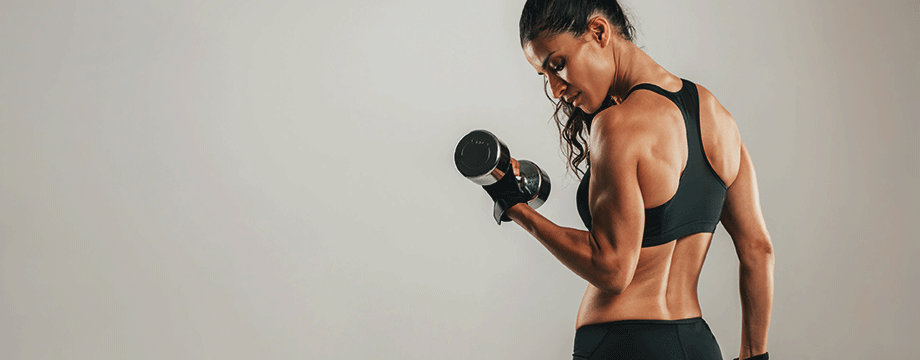Building strength

Expert advice for building a stronger body
A growing trend in fitness is the move towards building a strong, healthy body rather than trying to be as skinny as possible. The “strong not skinny” mantra has been popping up more and more on social media in recent times.
Personal trainer Aimee Buchler (www.aimeebuchler.com) has noted this trend among her clients. “I think women are concerned about both becoming strong and looking good,” she says. “And nowadays looking good means having more muscle on your body than the skinny trend. As a personal mind and body coach I work with many women, most of whom have the goal of wanting to get toned but are fully committed to becoming stronger.”
“Something we all need to remember is that being skinny is normal and healthy for some women,” adds Cecilia Harris, co-founder of Results with Lucy (resultswithlucy.com). “My take on it is that women should be free to choose the lifestyle they want – but if you choose fitness you don’t have to aspire to a particular body shape. Feeling powerful, healthy and confident in yourself is what really matters.”
Training to gain
“There is a difference between training for muscle gain (or the toned look) and training for strength, with or without weights,” says Aimee. “If you are a beginner and haven’t really trained or used weights before, start using your body weight to do exercises. This can be done anywhere and requires little to no equipment. Bodyweight exercises I recommend for strength include bodyweight squats, push-ups, lunges and dips. Have a look on You Tube if you aren’t sure what these are.”
“However, for real strength gains, you need to do resistance training (i.e. resisting a load) and this will require you to head to a gym. I would recommend asking a fitness instructor or personal trainer to guide you through the fundamental movements of strength training, which are:
- Squats
- Deadlifts
- Overhead press
- Bench press
- Pull-ups
- Lunges
- Dips
Aimee continues: “The philosophy is pretty simple: resistance training provides an overload to the body which forces an adaptation to occur in the form of strength increase. As you get stronger, the exercise gets easier, so we need to use something called progressive overload to keep you getting stronger and not reaching a plateau. This simply means progressively adding on bits of weight to your sets every week or two weeks.
You will be surprised what amazing things your body is capable of!
What’s your body type?
“My advice to anyone who is worried about lifting weights is – don’t be!” says Cecilia. “All you need to do is understand your body type to know how much weight lifting you can do without getting bulky. There are three main body types:
Ectomorphs are naturally very skinny and find it difficult to gain weight (both muscle and fat). This body type can lift very heavy weights without getting bulky and often get amazing results with weight lifting. If you are an ectomorph, heavy weightlifting will make you toned and it’s very unlikely that it will make you bulky.
Mesomorphs can be slim or overweight, but they have the ability to lose and gain weight (both muscle and fat) very easily. Mesomorphs need to be careful not to do too much weightlifting and high intensity interval training (HIIT) because this can make them bulky.
Endomorphs have a curvier body type, with shorter arms and legs. This body type has a much harder time trying to lose weight and they find it very easy to gain muscle, especially in their legs. I would suggest that endomorphs avoid any heavy weight lifting and HIIT, because this will just make them bulkier. Their focus should be more on cardio with lighter circuits.”
Don’t forget nutrition
“No strength gains can come without the right nutrition and water intake accompanying your training,” says Aimee. “Make sure that you drink enough water and have an adequate amount of protein in your diet. Why? Because protein is the building block for all cells, so without that there can be no strength increase as protein is what the muscle needs to become strong and/or grow. I recommend a protein source at each meal (eggs, meat, fish, yogurt) and a protein shake in between meals.”
Read previous Your Living articles here...
Read articles from our latest issue here...